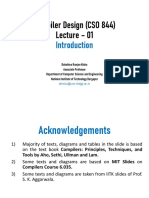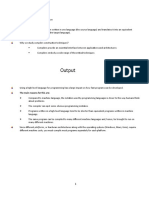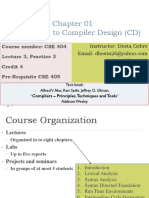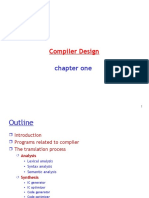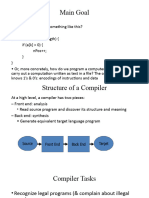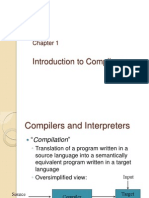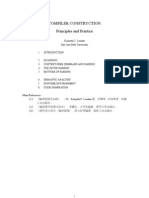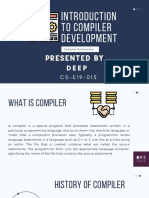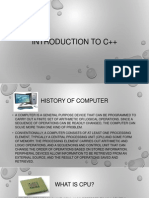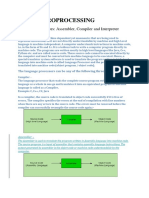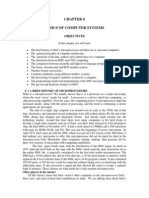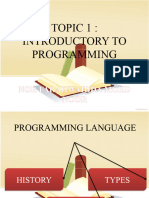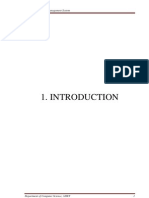0% found this document useful (0 votes)
40 views27 pagesChapter 1 Introduction To Compiler Construction
The document provides an introduction to compiler construction, detailing the process of translating high-level programming languages into machine code. It discusses the roles of compilers and interpreters, the phases of compilation, and the architecture of compilers, including lexical analysis, parsing, semantic analysis, optimization, and code generation. Additionally, it highlights important qualities in a compiler, historical milestones, and applications of compiler technology.
Uploaded by
kimmaurice4Copyright
© © All Rights Reserved
We take content rights seriously. If you suspect this is your content, claim it here.
Available Formats
Download as PDF, TXT or read online on Scribd
0% found this document useful (0 votes)
40 views27 pagesChapter 1 Introduction To Compiler Construction
The document provides an introduction to compiler construction, detailing the process of translating high-level programming languages into machine code. It discusses the roles of compilers and interpreters, the phases of compilation, and the architecture of compilers, including lexical analysis, parsing, semantic analysis, optimization, and code generation. Additionally, it highlights important qualities in a compiler, historical milestones, and applications of compiler technology.
Uploaded by
kimmaurice4Copyright
© © All Rights Reserved
We take content rights seriously. If you suspect this is your content, claim it here.
Available Formats
Download as PDF, TXT or read online on Scribd
/ 27














